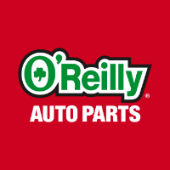-
Welcome to Auto Parts Forum
Whether you are a veteran automotive parts guru or just someone looking for some quick auto parts advice, register today and start a new topic in our forum. Registration is free and you can even sign up with social network platforms such as Facebook, X, and LinkedIn.
AASA’s McCarthy: ‘Current Market Is A Battle For Availability’
-
Similar Topics
-
By Counterman
In link hidden, please login to view, we gave leaders from the major distribution groups and trade associations an opportunity to reflect on the most critical issues affecting the automotive aftermarket. For the second year in a row, we let distribution leaders “riff” on these topics in their own words.
Here’s what Paul McCarthy, president and CEO of MEMA Aftermarket Suppliers, had to say about the ongoing battle to pass federal Right-to-Repair legislation.
We are in a historic moment for our industry. The REPAIR Act is the most important piece of aftermarket federal legislation since Magnuson-Moss in 1975.
If we don’t have the REPAIR Act, our research says that by 2035, $86 billion in consumer service choices will be thwarted by repair restrictions – and that number will grow quickly. Repairability isn’t just an automotive issue. It matters even more in the commercial-vehicle sector, where the information and access are needed to minimize downtime.
Government advocacy plays a crucial role in strengthening the automotive aftermarket. It’s an important activity that we can all participate in whether you have an “inside-the-beltway” background or just are passionate about our industry. By using our collective voices to highlight the significance of issues such as the Right to Repair movement, we support a thriving aftermarket sector that benefits consumers, ensures safety and fosters innovation.
And we have something that we can all believe in; the REPAIR Act is principle-based. We ask to continue what we’ve had – which is the ability to repair and maintain vehicles. What we advocate for is simple: the principles of consumer choice and free markets.
One of our key values is a commitment to safety. Aftermarket suppliers believe in safety, cybersecurity, trust, intellectual-property protection, privacy and cross-industry cooperation. And our industry has the technology and governance institutions to achieve all of this and repairability for consumers.
For example, the REPAIR act engages NHTSA to ensure repair safety and cybersecurity. As NHTSA pointed out in its vehicle cybersecurity guidelines, “ … Cybersecurity should not become a reason to justify limiting serviceability. Similarly, serviceability should not limit strong cybersecurity controls.” The REPAIR act ensures this.
Building relationships with elected officials is another powerful strategy. This summer, several of our members are engaging one-on-one with representatives at their facilities. These essential interactions ensure the industry’s voices are heard and cultivate government champions who can drive positive change on the aftermarket’s behalf.
I invite you to join MEMA’s and our industry’s advocacy efforts on repair access and other issues that are important to you. Your work and influence today will ensure a vibrant and prosperous aftermarket sector for years to come.
MEMA Aftermarket Suppliers
Founded: 1904 Headquarters: RTP, North Carolina (aftermarket); Washington, D.C. (government advocacy) Number of members: 375 aftermarket suppliers of the parts, tools, chemical and technologies that keep vehicles running safely and affordably across their lifecycle. Website: link hidden, please login to view The post
link hidden, please login to view appeared first on link hidden, please login to view.
link hidden, please login to view -
By Rawmen_noodles53
Hi all, I'm looking for some information on parts the 2019 Mazda CX-5 2.2 Skyactive-D (diesel) here in Canada/North America.
Seeing as though this engine was only available in North America for 1 year, auto parts stores confirmed with me there will be limited aftermarket options available in the coming years. My biggest question is how long will Mazda make engine parts for this specific Skyactive-D available in Canada? Its my understanding that Vehicle manufactures are obligated to have OEM parts available for a certain amount of time, and after that time availability varies with number of models sold and demand.
Do people think Mazda will consider discontinuing engine parts for the 2.2 diesel in the near future? The Skyactive-D has been sold all the world since 2012, is it as simple as Mazda Canada getting parts from over seas if they are not in stock in Canada or is there a Canadian parts standardization that complicates that? I don't know where the parts come from and how things differ from country to country. If anyone could chime with some good info or their similar experience with with other vehicle models and situations it would be much appreciated
Thanks
-
By Counterman
The automotive specialty-equipment market posted 2% year-over-year growth in 2022, reaching $51.8 billion in sales, according the new 2023 SEMA Market Report.
The 2022 results lagged the industry’s typical annual growth rate of 4% to 5%. However, given an environment of rising interest rates and what might be described as a post-pandemic economic hangover, the slowdown wasn’t a surprise. Looking at the bigger picture, 2022 continued a decade of growth for the industry.
The specialty-equipment market showed positive results in 2022 with an overall market growth of 2% and reaching $51.8 billion in sales, according the new 2023 SEMA Market Report. This continues a decade of growth for the industry, even among recent economic turmoil created by the pandemic.
SEMA estimates that sales growth will remain fairly flat in 2023, before ramping back up toward the industry’s historical growth trend in 2024.
“Even as economic uncertainty looms, particularly around inflation, consumers are passionate about customizing and continue to buy from our industry,” SEMA Director of Market Research Gavin Knapp said. “This report provides new and relevant findings that businesses can use to better connect with their customers, find areas of opportunity and drive their business.”
Available for download on
link hidden, please login to view, the SEMA Market Report provides a comprehensive review of the automotive specialty equipment market in 2022 and includes new data on the U.S. market size, consumer profiling and industry trends that can help companies make more informed business decisions. Key findings from the report include:
Pickup accessorization remains the biggest segment for the industry, topping $15 billion in sales. The CUV accessory market continues to grow, reaching 14% of specialty-equipment sales in 2022. Younger people continue to be the most likely to accessorize and perform more upgrades; 50% percent of those modifying their vehicles are under the age of 40. 50% of accessorizors own a powersports or recreational vehicle, opening up cross-selling opportunities. Over 80% of companies expect their sales to stay the same or grow in 2023. The report is the focus of the upcoming SEMA Market Update webinar on June 21.
The post
link hidden, please login to view appeared first on link hidden, please login to view.
link hidden, please login to view 
-
By Counterman
In our cover story for
link hidden, please login to view, we asked distribution leaders to reflect on the successes and challenges of 2022 and share some of their insights for the industry in 2023. Here’s our Q&A with Paul McCarthy, president and CEO of MEMA Aftermarket Suppliers.
AMN/CM: What is the greatest threat facing the automotive aftermarket? What is the greatest opportunity?
PM: I have combined these questions, because if you look through a longer-term lens, the aftermarket’s greatest threat and opportunity are the same: technology.
EVs have generated concern in the aftermarket, but that needs to be kept in perspective. Remember the aftermarket’s history: With every new technology there were projections that there will be nothing or not enough to repair – but every time we still see problems and failures with these new parts and technologies. Think of fuel injection, electronic ignition or TPMS. Auto engineers are not perfect, and the real world is a difficult operating environment. In fact, NADA data indicates that EVs are coming back to the dealer more often than ICE vehicles – and needing more repairs per visit than ICE. New technologies have historically been good for aftermarket revenue – and we are looking at a flood of new technologies unlike any we have ever seen.
With so much focus on electrification, we aren’t talking enough about the revolution happening now: ADAS. We released a study at Vision that projected ADAS will exceed a billion-dollar market for replacement parts by 2030. Let me say that again: a billion-dollar market for replacement parts. That’s all opportunity and upside for the aftermarket.
And, the story of increasing vehicle content is not only ADAS or EVs. The increase in new-vehicle prices demonstrates the lifecycle opportunity. New-vehicle prices hit an eye-watering $30,000 a decade ago; now, the average is $50,000. And while some of that is near-term supply issues, increasing vehicle content has driven this long-term trend. Every one of these new technologies can break or need calibration or maintenance. We believe this huge increase in vehicle content bodes well for the future of aftermarket tickets.
The aftermarket is now living the famed “Innovator’s Dilemma” everyday: the challenge of managing two businesses. One, maximizing the returns from our existing business, which has a very long, fat tail. In parallel, we are growing new, innovative businesses prepared to take advantage of the aftermarket opportunities of electrified, automated and connected vehicles. In our view, the aftermarket is well-positioned in both the old and new industries.
The aftermarket should not be afraid of the future. If we engage the classic aftermarket entrepreneurial spirit, we believe technology and content bring more opportunity than risk.
AMN/CM: How can the independent aftermarket parts and service segments best prepare to repair the car of tomorrow as ADAS, EVs and other technologies become more prominent?
PM: In addition to the points above, we have a lot of work and training to do – together, up and down the value chain – to make sure that shops are prepared, and consumers know that the aftermarket is ready and able to supply the parts, tools and technologies to fix these vehicles. And we can.
AMN/CM: How is the Right to Repair issue impacting your members’ business?
PM: All this opportunity is contingent on one thing: Right to Repair legislation that allows market competition. Right to Repair, and the Federal REPAIR Act, are necessary to realize our future.
Consumers need this. If Congress takes action to ensure choice in vehicle repair and maintenance, consumers will save enormous amounts of time and money.
We appreciate the cross-industry partnership on this bill – a unified effort is essential to success. We have momentum. You’ve heard about the many bipartisan bill co-sponsors, the executive order, the FTC report and the hearings all in favor and support of consumers right to choose where and with what parts their vehicle is repaired. This new Congress is our moment; it may be our best chance of getting a bill passed. If we don’t succeed, by 2035 $63 billion in consumer service choices will be thwarted by repair restrictions – and that number will quickly grow. Our industry must – and will – be heard to protect consumers and free markets.
The post
link hidden, please login to view appeared first on link hidden, please login to view.
link hidden, please login to view
-



Recommended Posts
Join the conversation
You can post now and register later. If you have an account, sign in now to post with your account.
Note: Your post will require moderator approval before it will be visible.